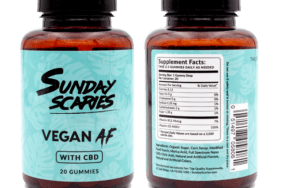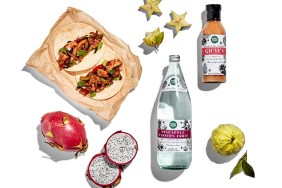Culinary nutritionist and author of What the Fork Are You Eating? Stefanie Sacks, MS, CNS, CDN knows a thing or two about making wise food choices. Eating healthy is easier said than done — even when you have the best intentions. So we asked the author for 10 things she thinks we should keep in mind when stocking our pantry.
Packaged Foods
“Not all preservatives are created equally. If you can’t forgo buying processed foods, instead of opting for ones made with chemical preservatives like benzoates, sorbates, sulfites, nitrates and nitrites, BHA/BHT, propyl gallate and TBHQ, all of which have been linked to various illnesses, opt for the safer ‘chemicals,’ such as ascorbic acid and its derivatives, sodium erythorbate and erythorbic acid, sodium isoascorbate, vitamin E and citric acid.”
It Ain’t Natural Unless It’s Natural
“Artificial and ‘natural’ flavors are concocted in a lab and the only difference is that the first comes from synthetic sources and the latter from ‘natural’ sources. Flavors, whether artificial or natural, are commonly a marriage of multiple compounds (i.e., roughly 63 flavor agents are used to create the artificial strawberry flavor found in Burger King’s strawberry milkshake). Aim to choose foods that are void of artificial flavors as well as the ambiguous ‘natural’ flavors. Real food is the way to go, but we don’t live in an ideal world, so when buying packaged foods, look for herbs and spices and other pure food ingredients to flavor your food.”
Avoid Dyes
“Food dye can be found in many foods you wouldn’t expect. Most jarred pickles on supermarket shelves today contain yellow food dye, when in fact, there are plenty available that do just fine without the added color. The United States’ consumption of food dye has increased five-fold since 1955, according to the Center for Science in the Public Interest. And too much food dye, which is all too common, can promote cancer, gene mutations and neurological damage, including hyperactivity in already hyperactive children. So, avoid food dye at all costs. There are better options like foods colored with extracts from fruits and vegetables.”

Sweet Tooth Troubles
“Anything that says low sugar, reduced sugar, no added sugar, zero calories or calorie free is probably laden with artificial sweeteners (i.e., saccharin, aspartame, acesulfame-K, sucralose and neotame). You also have the novels (i.e., Stevia and its Coke and Pepsi pals Truvia and Pure Via, respectively) and sugar alcohols (i.e., sorbitol). Best to stick with a little bit of the real deal.”
Maltodextrin, Dextrose and High Fructose Corn Syrup
“There are roughly 50 different ways that sugar can be listed on your ingredient labels. Everything from soups and sauces to alternative milks (like soy milk) and yogurt contain sinful amounts of sweetness. From high fructose corn syrup to dextrose, maltodextrin and cane sugar, it’s all sugar. Don’t be fooled by sugar’s many euphemisms. Aim to buy packaged foods where the sweet stuff is listed as minimally as possible.”
Hydrogenated Oils
“Just because your product says ‘trans-fat free’ doesn’t mean that it is 100 percent void of these man-made fats. According to the FDA, a product can claim that it’s ‘trans-fat free’ even if it contains up to .5g. Best to look at your ingredient list to determine if your food is void of partially hydrogenated or hydrogenated oils.”
App Yourself for Better Health
“The best way to navigate pesticides in produce is to use the Environmental Working Group’s Dirty Dozen smartphone app. This can help you avoid exposure to unnecessary chemicals.”
Factories Are for Cars, Not Food
“Ninety-seven percent of edible animals come from factory farms. In other words, they are raised in confinement in unsanitary conditions and are given antibiotics daily to prevent disease. Because of the insidious overuse of antibiotics, drug-resistant bacteria has spawned in the animals and when you eat them, the bacteria is transferred to you and there is a good chance that it will be resistant to drugs. Each year in the U.S., at least two million people become infected with bacteria that are resistant to antibiotics. Choose truly pasture-raised animals that are not given drugs or have drugs administered judiciously and appropriately.”
Lame Lingo
“Don’t get fooled by label lingo, such as antibiotic-free, hormone-free, cage-free, free-range, pasture-raised and grass-fed. While these terms are defined by our government, none of them are truly regulated.”
The Attack of the Mutant Crops
“The top genetically modified crops are corn, soy, canola and sugar beets. Many ingredients in foods today are derived from these crops. Use the Non-GMO Shopping Guide to help you avoid foods altered by science.”







